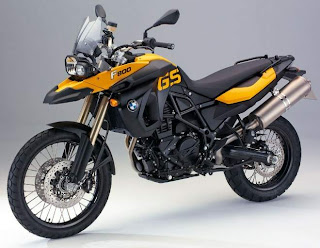Suzuki GS500F 2010
 The Suzuki GS500F features styling that is inspired on the GSX-R championship-winning machines as, starting with 2004 it presents a full fairing with the purpose of increasing rider comfort by providing an aerodynamic sport appearance.
The Suzuki GS500F features styling that is inspired on the GSX-R championship-winning machines as, starting with 2004 it presents a full fairing with the purpose of increasing rider comfort by providing an aerodynamic sport appearance. Its four-stroke, twin cylinder, 487cc, air cooled DOHC engine provides it with all the needed power while it is still economical, but most importantly, dependable. Those 34mm Mikuni carburetors should receive all the credit for that as they are the needed element from a chain of pieces that form a reliable engine with smooth power delivery.
Its four-stroke, twin cylinder, 487cc, air cooled DOHC engine provides it with all the needed power while it is still economical, but most importantly, dependable. Those 34mm Mikuni carburetors should receive all the credit for that as they are the needed element from a chain of pieces that form a reliable engine with smooth power delivery.Displacement: 487cc
Type: twin-cylinder, 4-stroke, air-cooled DOHC
Bore Stroke: 74.0 mm (2.913 in) x 56.6 mm (2.228 in)
Compression Ratio: 9.0:1
Fuel System: BSR34, twin
Lubrication: Wet Sump
Ignition: Electronic ignition (Transistorized)
Transmission: 6-speed constant mesh
Final Drive: D.I.D. 520VM, 110 links
Chassis and Dimensions
Suspension Front: Telescopic, coil spring, oil damped
Suspension Rear: Link type, coil spring, oil damped
Brakes Front: Disc brake
Brakes Rear: Disc brake
Tires Front: 110/70-17M/C (54H), tubeless
Tires Rear: 130/70-17M/C (62H), tubeless
Overall Length: 2080 mm (81.9 in)
Overall Width: 800 mm (31.5 in)
Overall Height: 1150 mm (45.3 in)
Seat Height: 790 mm (31.1 in)
Ground Clearance: 120 mm (4.7 in)
Wheelbase: 1405 mm (55.3 in)
Curb Weight: 199 kg (439 lbs)
Fuel Tank Capacity: 20.0 L (5.3/4.4 US/Imp gal)
Key Features
==>Oil cooler – Air-cooled oil cooler for more consistent engine operating temperature and increased engine durability.
==>Rear suspension – Easily accessible 7-way preload adjuster of rear suspension allows quick tailoring to rider’s preference
==>Proven four-stroke, twin cylinder, 487cc, air-cooled DOHC engine for dependable and economical operation.
==>Sport-styled 2-into-1 exhaust system tuned for strong low-to-mid rpm engine performance.
==>Strong braking performance – single disc front brake with large 310mm rotor and four-piston caliper, plus single disc rear brake with two-piston caliper.
==>Telescopic front fork and link-type rear suspension with adjustable preload provide a comfortable ride for commuting or pleasure riding.
==>Twin 34mm Mikuni carburetors for smooth power delivery, strong acceleration and fuel efficiency.
==>Front: 110/70-17M/C (54H), tubeless Tires Rear: 130/70-17M/C (62H), tubeless Overall Length: 2080 mm (81.9 in) Overall Width: 800 mm (31.5 in) Overall Height: 1150 mm (45.3 in) Seat Height: 790 mm (31.1 in) Ground Clearance: 120 mm (4.7 in)






















